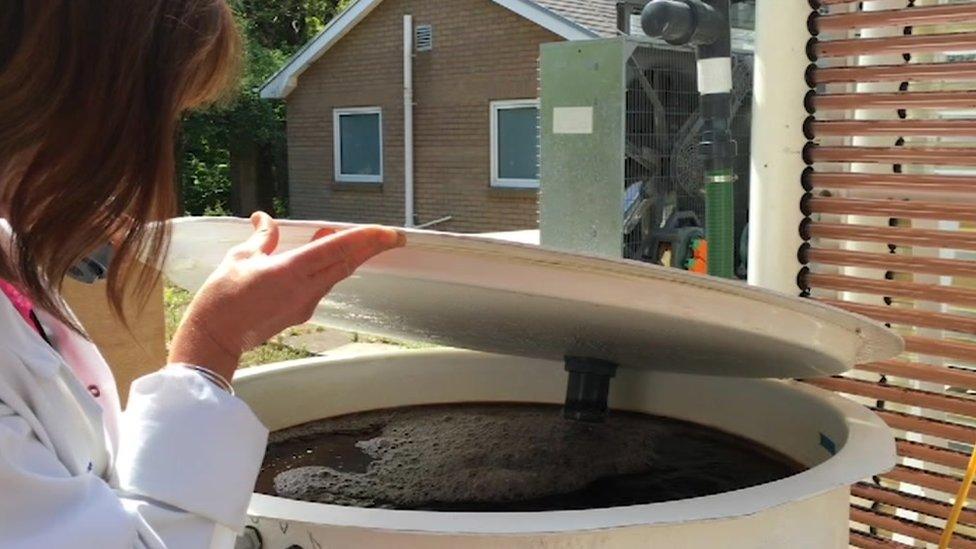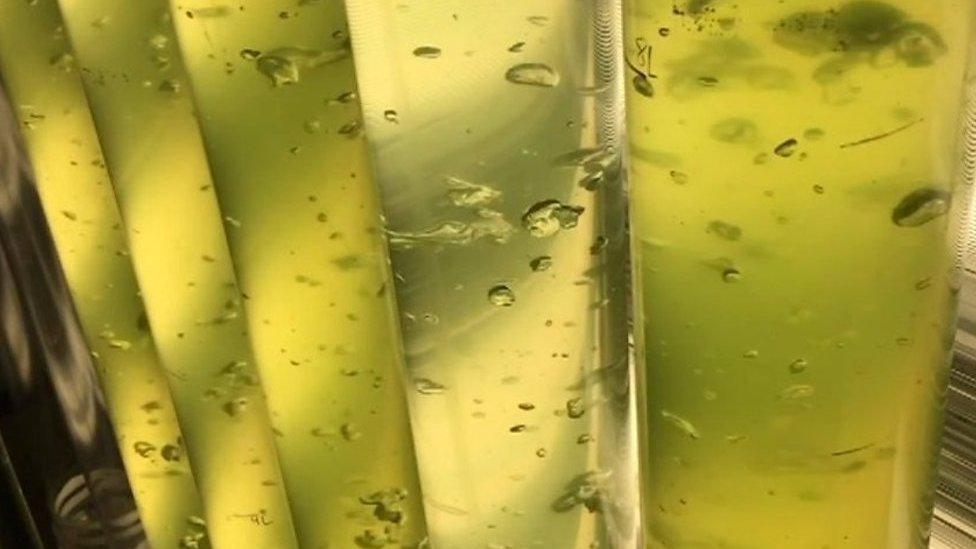Swansea Uni study finds UV-blocking algae a sunscreen
- Published
Researchers believe natural microalgae could replace synthetic sunscreens
UV protective algae could be used as a sustainable alternative to sunscreen, research at Swansea University has discovered.
There are hopes microalgae, which cannot be seen by the naked eye, could replace synthetic sunscreens.
The natural products, found in the sea, have a high absorbance of damaging sun rays.
Dr Carole Llewellyn, who has led the research, said algae sunscreen would be better for the environment.
"What we found is that algae have their own process of protecting themselves against the damaging ultra-violet rays," said Dr Llewellyn, an associate professor in applied aquatic bioscience.
"We're really interested in finding out how they do this and applying it to products we want to use.
"There's increasing evidence that some of the synthetic sunscreens are quite harmful to the environment when they wash off in the sea.
"Many sunscreens are produced from petroleum sources and the industry is looking for something more sustainable."

Microalgae can be cultivated in a laboratory and the university has a facility where they are grown in photobioreactors or small flasks.
Once the quantities are large enough, the algae are removed from the water they are growing in and concentrated up.
The cells are then broken down - a process known as down streaming - to extract the colourless sunscreen compounds.
It comes at a time when increasing numbers of consumers are looking to natural products.
For anyone who might initially seem squeamish at the idea of using an algae-based product, Dr Llewellyn said: "Think about the sunscreen you are currently using and where the ingredients have come from.
"To use a natural alternative seems like a much better way forward."
While companies have expressed interest in the product, Dr Llewellyn said it does face certain challenges.
The main one is making it a commercial reality, as synthetic sunscreens are cheap to produce in large quantities.
"That doesn't mean to say in the future the cost of the process [with algae] won't come down and then it will look like an economically viable product," she added.
- Published19 May 2017
